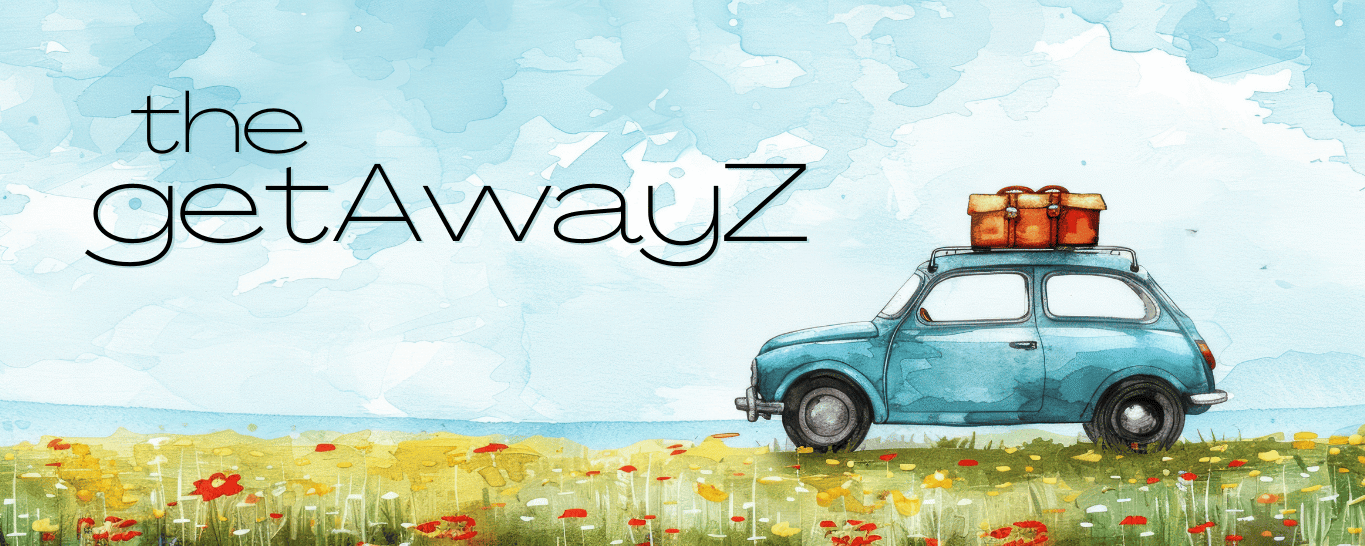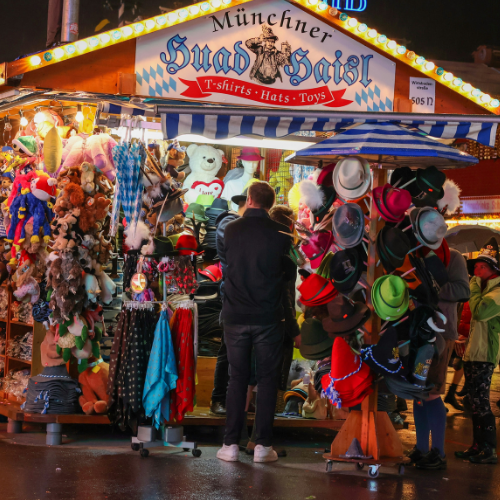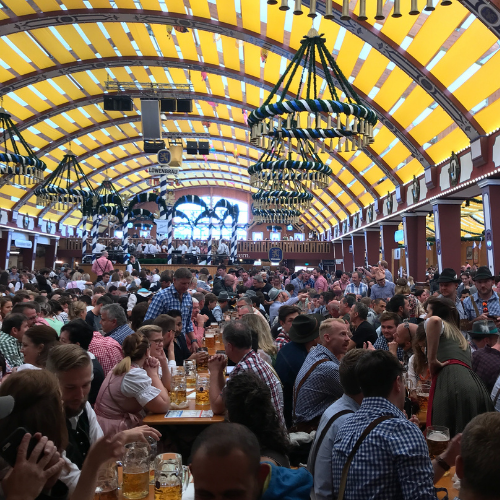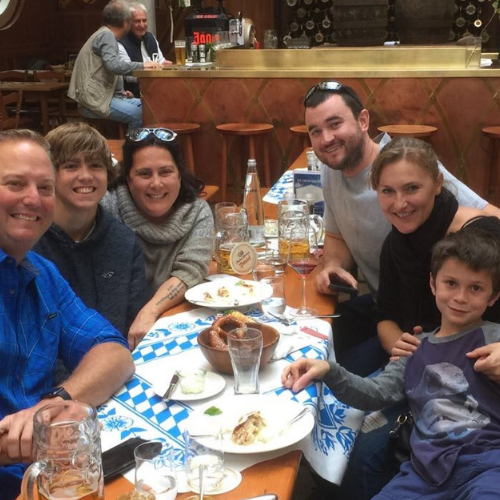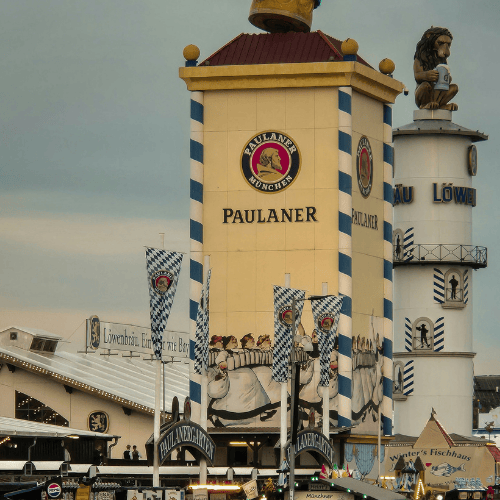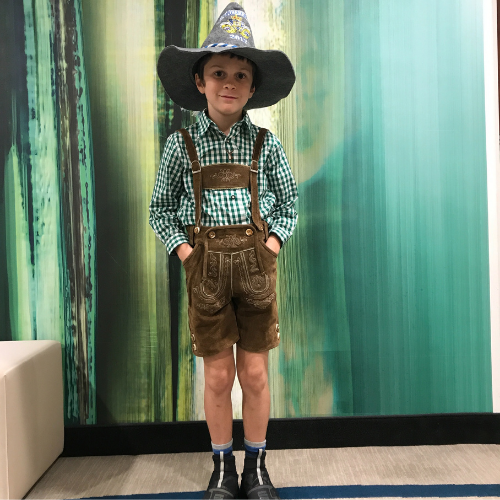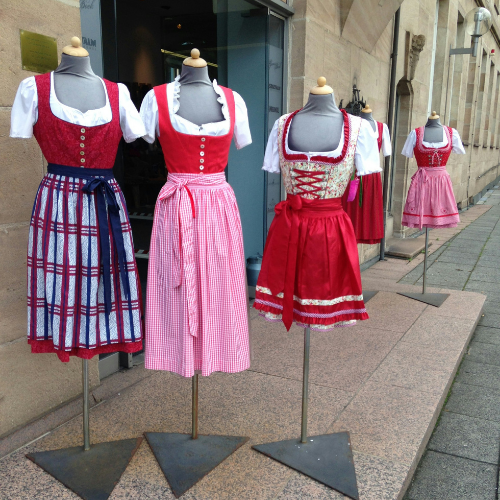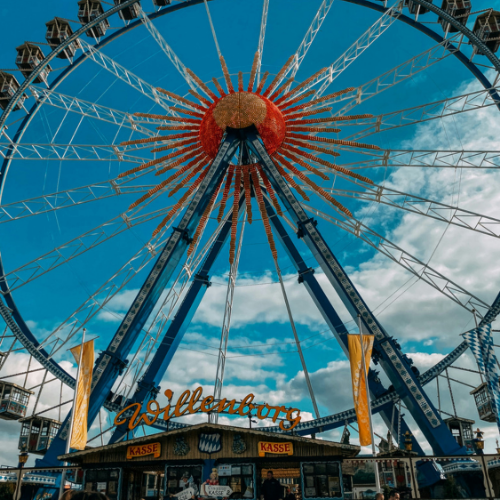Oktoberfest in Munich: What to Know Before You Go
Oktoberfest in Munich isn’t just about beer. It’s about history, tradition, a whole lot of food, and yes, people dancing on benches. It’s loud, chaotic, surprisingly family-friendly, and way more organized than you’d expect for a festival that serves millions of liters of beer.
We’ve done it a couple of different ways. Lisa went in her 20s with friends, long before lederhosen were hanging in the front closet. And a few years ago, we all went together to celebrate Dylan’s 10th birthday, just after we’d moved to Florence. He wore the full outfit on the second night. People cheered. Strangers took photos. Someone handed him a pretzel the size of his head. It was everything we hoped for and somehow still completely unexpected.
📍Where Is Oktoberfest Held?
Oktoberfest takes place in Munich, the capital of Bavaria, in southern Germany. The official festival grounds are called Theresienwiese, or just “Wiesn” for short. It’s a huge open space in the Ludwigsvorstadt district, easily accessible by U-Bahn.
🍺 Where it All Began
Oktoberfest began in 1810 as a giant public wedding celebration for Crown Prince Ludwig and Princess Therese. They held a horse race on the fields in front of the city and invited everyone. Munich had so much fun they just… kept doing it.
Over the years, the horse races were replaced by carnival rides and beer tents. The festival got bigger, louder, and way more international, but it never lost its local heart. It still opens with the mayor tapping the first keg and shouting “O’zapft is!” – “It’s tapped.” Then the drinking begins.
🎟️ What to Expect at Oktoberfest
- There are 14 main beer tents, each offering a different experience and beer from one of six official Munich breweries.
- Food is everywhere: roast chicken, giant pretzels, sausages, sauerkraut, and spaetzle.
- Music plays a big role with oompah bands, singalongs, and lots of dancing on benches.
- It’s more family-friendly than people think, especially during the day.
- No ticket is required to enter the grounds or tents, except one special section (see below).
🩳 What to Wear: Dirndls and Lederhosen
You’ll see nearly everyone in traditional Bavarian clothing, and yes, tourists are encouraged to join in.
Dirndls are dresses with a fitted bodice, full skirt, apron, and blouse. The apron bow placement actually means something:
- Left = Single
- Right = Taken
- Center = Undecided
- Back = Widowed or server
Dirndl is pronounced “DEERN-dl”, said quickly in one syllable.
Lederhosen are leather shorts (or pants) with suspenders. One of our favorite memories is seeing a 10-year-old in a full set, getting smiles and waves from locals all night long. It was such a sweet connection to the culture.
🎠 Oide Wiesn: A Quieter, More Traditional Experience
Oide Wiesn (pronounced “OY-duh VEE-sen”) means “Old Oktoberfest” and is a fenced-off section of the festival that brings back the charm of the original event. It’s perfect if you’re visiting with kids or just want a break from the big tents.
Here’s what you’ll find:
- Brass bands and folk dancing
- Vintage rides and carnival games
- Smaller beer tents with a relaxed atmosphere
- Historical displays and cultural performances
There’s a small entrance fee (about €4), but it’s worth it if you want to experience Oktoberfest in a more traditional, family-friendly way.
🏨 Where to Stay Near Oktoberfest
To be close to the action, book a place near Theresienwiese or in these nearby neighborhoods:
- Ludwigsvorstadt-Isarvorstadt: Closest to the festival grounds and walkable. Full of cafés, hotels, and direct U-Bahn access.
- Schwanthalerhöhe: Slightly west of the main entrance and often has better availability and prices.
- Altstadt-Lehel: In Munich’s old town. Great if you also want to do sightseeing. Only about 10 to 15 minutes by U-Bahn.
- Sendlinger Tor: Central, stylish, and well connected to everything.
Tip: Hotels fill quickly, and prices spike during Oktoberfest. Book early if you want to be within walking distance.
🕐 When to Go and Festival Hours
Oktoberfest in Munich usually runs from mid-September through the first Sunday in October. If October 3rd (German Unity Day) falls after that Sunday, the festival is extended through that date.
Beer Tent Hours:
- Weekdays: 10:00 AM to 11:30 PM
- Weekends: 9:00 AM to 11:30 PM
- Last call for drinks: 10:30 PM
Fairgrounds and Rides:
- 10:00 AM to 11:30 PM
- Open until midnight on Fridays and Saturdays
Two tents stay open later: Käfer Wiesn-Schänke and the Weinzelt, both open until 1:00 AM with drinks served until 12:30 AM.
🧳 Final Tips Before You Go
- Book accommodations well in advance
- Wear comfortable shoes, especially if you’re walking or dancing
- Bring cash, especially for smaller food stalls and vendors
- Visit during the day for a more relaxed experience
- Dress in traditional clothing to join in the fun and feel like part of the celebration
- Don’t skip Oide Wiesn if you want something quieter and more cultural
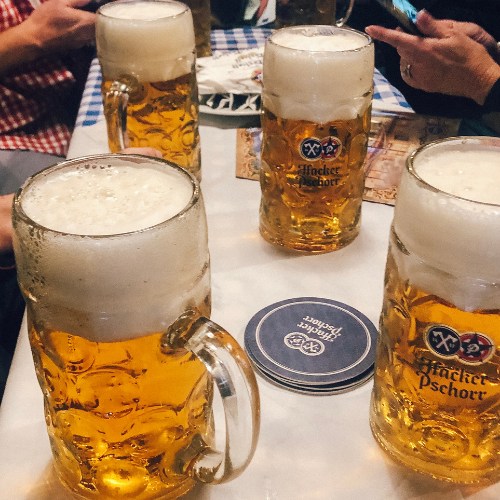
🎧 Want More Oktoberfest Stories?
We talk about what it’s like to go in your 20s and what it’s like to go with a kid. From lederhosen moments to unexpected highlights, it’s all in the latest episode.
👉 Listen to the Oktoberfest episode on The Getawayz Podcast
🍺 Oktoberfest Must-Haves
Heading to Oktoberfest in Munich or throwing your own fest at home? These are the essentials we pack, wear, and use to celebrate in style. Whether we’re in a beer tent or just in the backyard with a stein in hand, these picks help you look the part and enjoy the party. From traditional outfits to practical extras (hello, stain pen), everything here earns its place.
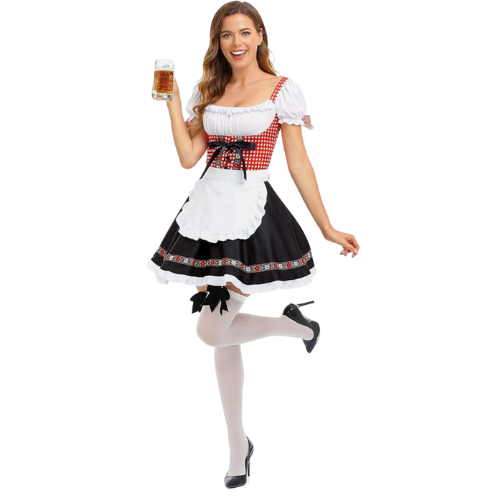
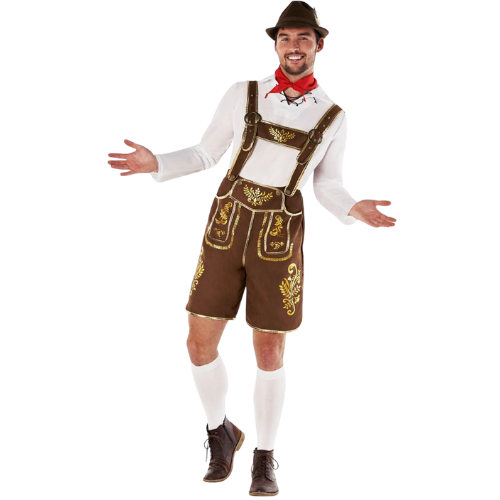
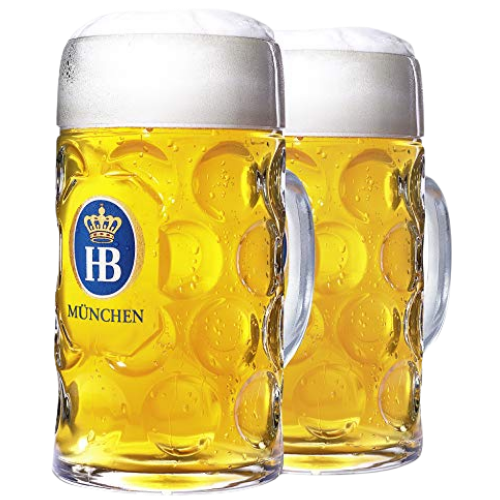
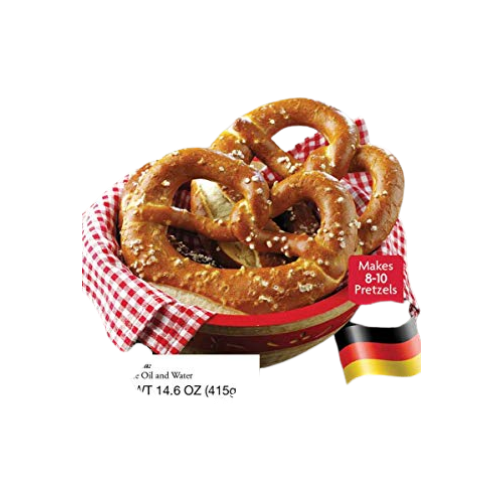

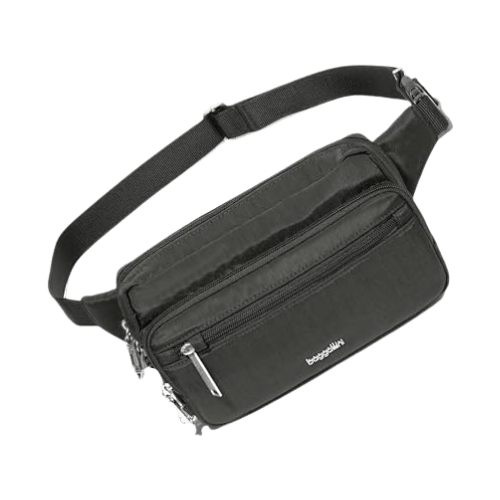
https://amzn.to/3ZZTwGdSome of these links are affiliate links. That means we may earn a small commission if you buy something we’ve recommended, at no extra cost to you. We only share stuff we actually use or would pack ourselves for Oktoberfest.
Want to explore Germany? Explore all our Germany blog posts for city guides, castles, and cultural tips.
